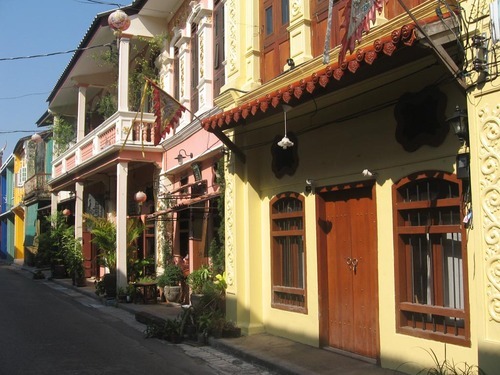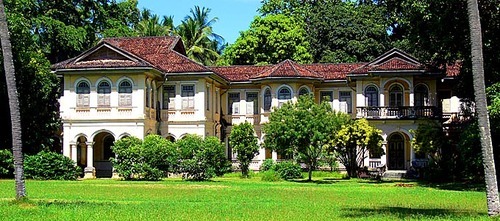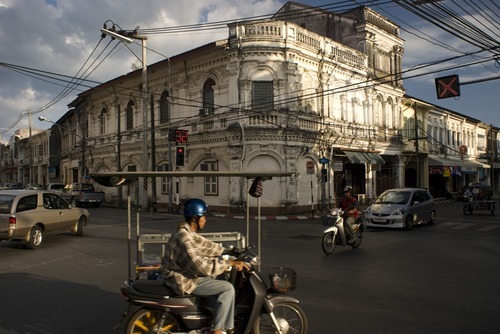For millions of international visitors, Phuket is an island paradise, wrapping sun, sand and sea into a glamorous package that attracts them back again and again. However, 150 or so years ago, the island attracted visitors of a different sort – Chinese migrants seeking to make their fortunes from Phuket’s lucrative tin mining industry.
Many were from the Fujian area of China, bringing with them their Hokkien culture and language; others were from nearby Penang, as well as traders from Malaysia, India and the Straits Settlements. Together they forged Phuket Town, channelling tin, goods and money through the port in Tongkah Bay in ever growing amounts.

Some gained mine concessions, making fortunes and establishing family dynasties on the island. They built huge mansions, similar to the colonial properties in Penang, and wore European clothes. Others set up trading companies and shops-cum-homes along Thalang Road, Old Phuket’s main commercial centre, and adjacent streets.

Old Town Phuket is a maze of one-way streets and small sois (alleyways). For first time visitors walking tours of Phuket Town are the best option to avoid confusion from trying to figure out the one way streets. Walking tours of Phuket Town are also the best perspective from which to take in some of the city’s beautiful Sino-Portuguese architecture.
Architecture in the old town dates back to the height of the tin mining era, roughly 80-120 years ago. Lining the streets are Sino-Portuguese-style shophouses. These have a narrow frontage, but go back a long way from the road. To get an idea how far back they go, drop in at China Inn Café (closed on Sundays) at the west end of Thalang Road.
All true shophouses are built to conform with Chinese feng shui beliefs, which include a central courtyard open to the sky, with a well at which the families in the old days would bathe and do their washing. The buildings in front and back of this courtyard have thick walls and small windows, keeping them cool in the hottest weather.

In front, along the street, is a Ngor Ka Kee (Chinese for ‘roofed pavement’), originally intended to give pedestrians shelter from sun and rain. Over the years many of these were taken over as part of the shops they fronted, but recent efforts by the local government have seen many of them returned to their original purpose, making a stroll through the old city much more pleasurable.
Many were from the Fujian area of China, bringing with them their Hokkien culture and language; others were from nearby Penang, as well as traders from Malaysia, India and the Straits Settlements. Together they forged Phuket Town, channelling tin, goods and money through the port in Tongkah Bay in ever growing amounts.

Some gained mine concessions, making fortunes and establishing family dynasties on the island. They built huge mansions, similar to the colonial properties in Penang, and wore European clothes. Others set up trading companies and shops-cum-homes along Thalang Road, Old Phuket’s main commercial centre, and adjacent streets.

Old Town Phuket is a maze of one-way streets and small sois (alleyways). For first time visitors walking tours of Phuket Town are the best option to avoid confusion from trying to figure out the one way streets. Walking tours of Phuket Town are also the best perspective from which to take in some of the city’s beautiful Sino-Portuguese architecture.
Architecture in the old town dates back to the height of the tin mining era, roughly 80-120 years ago. Lining the streets are Sino-Portuguese-style shophouses. These have a narrow frontage, but go back a long way from the road. To get an idea how far back they go, drop in at China Inn Café (closed on Sundays) at the west end of Thalang Road.
All true shophouses are built to conform with Chinese feng shui beliefs, which include a central courtyard open to the sky, with a well at which the families in the old days would bathe and do their washing. The buildings in front and back of this courtyard have thick walls and small windows, keeping them cool in the hottest weather.

In front, along the street, is a Ngor Ka Kee (Chinese for ‘roofed pavement’), originally intended to give pedestrians shelter from sun and rain. Over the years many of these were taken over as part of the shops they fronted, but recent efforts by the local government have seen many of them returned to their original purpose, making a stroll through the old city much more pleasurable.


No comments:
Post a Comment